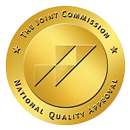
Youth Fentanyl Exposure Risks in San Diego: Protecting Our Teens
Medically Reviewed by:

Dr. Marco M. Zahedi
Medical Director, Compassion Recovery Center

Dr. Michael Majeski
Licensed Psychologist (LP), Compassion Recovery Center
Table of Contents
Introduction: The Fentanyl Crisis Gripping San Diego’s Youth
The beautiful coastal city of San Diego, known for its sunny skies and vibrant communities, is facing a growing and insidious threat: the fentanyl crisis. This powerful synthetic opioid is increasingly finding its way into the hands of young people, often with devastating consequences. The ease with which fentanyl can be disguised or mixed with other substances means many teens are unknowingly exposed, leading to accidental overdoses and a surge in addiction rates. Addressing youth fentanyl exposure San Diego is not just a public health concern; it’s an urgent call to protect the future of our community. The vulnerability of adolescents, coupled with the extreme potency of fentanyl, creates a perfect storm for tragedy. We must act decisively and compassionately to educate, prevent, and treat this growing epidemic. The importance of tackling youth exposure to fentanyl cannot be overstated. Adolescence is a critical period of brain development, and exposure to potent opioids like fentanyl can have long-lasting and detrimental effects on cognitive function, emotional regulation, and overall mental health. Beyond the immediate risk of overdose and death, fentanyl use can derail a young person’s life, impacting their education, relationships, and future prospects. For families in San Diego and across California, the fear of their child encountering this drug is a heavy burden. It’s crucial that parents, educators, healthcare providers, and community leaders come together to create a safety net for our teens. This involves open conversations, accessible information, and robust support systems. If you’re concerned about a young person in your life, remember that you are not alone, and help is available. Taking the first step to reach out today can make all the difference. Compassion Recovery Center understands the complexities of addiction and the unique challenges faced by individuals and families dealing with substance use, especially concerning potent substances like fentanyl. We are a specialized remote drug and alcohol rehab provider, primarily serving Orange County, California, but extending our telehealth services to individuals across the state, including San Diego. Our mission is to provide accessible, effective, and compassionate care through innovative telehealth addiction treatment. We believe that recovery is possible for everyone, and our programs are designed to meet you where you are, offering flexibility without compromising the quality of care. Whether you’re seeking information, support for a loved one, or are ready to explore treatment options for yourself or your teen, Compassion Recovery Center is here to guide you. We invite you to explore treatment options with us and learn how our virtual rehab California services can support your journey to healing. The fentanyl crisis requires a multi-faceted approach, blending awareness with actionable solutions. For too long, the shadows of stigma have prevented open discussion and timely intervention. However, the stakes are too high with fentanyl. Its lethality means that even a single exposure can be fatal. This underscores the need for readily available information about the fentanyl risks for teens and clear pathways to help. At Compassion Recovery Center, we are committed to being a part of that solution, offering programs like our Intensive Outpatient Program (IOP) via telehealth, which allows individuals to receive comprehensive care from the privacy and comfort of their own homes. This model is particularly beneficial for teens who can continue with their education and family life while engaging in recovery.
Understanding Fentanyl: The Invisible Threat
Fentanyl is a synthetic opioid that is estimated to be 50 to 100 times more potent than morphine and significantly stronger than heroin. Originally developed for pain management treatment for cancer patients, it has unfortunately been diverted for illicit use, leading to a public health crisis. Its extreme potency is what makes it so dangerous. A tiny amount, as small as two milligrams (equivalent to a few grains of salt), can be lethal, especially for someone who is not opioid-tolerant. The primary danger lies in respiratory depression – fentanyl can slow or stop a person’s breathing, leading to oxygen deprivation, brain damage, and death within minutes. Because it is cheap to produce and highly potent, drug traffickers often mix it with other drugs like heroin, cocaine, methamphetamine, and MDMA, or press it into counterfeit pills disguised as legitimate prescription medications such as Xanax, Adderall, or OxyContin. This means individuals, especially teens experimenting with drugs, may unknowingly ingest fentanyl, dramatically increasing their risk of overdose. Understanding this hidden danger is the first step in protecting our youth. If you suspect someone is struggling with substance use, it’s crucial to get help now before an accidental fentanyl exposure occurs. Youth are exposed to fentanyl in various ways, often without their knowledge. One of the most common pathways is through counterfeit pills. Teenagers might seek out what they believe are prescription painkillers or anxiety medications from illicit sources, unaware that these pills are laced with fentanyl. The “one pill can kill” warning is tragically accurate in these scenarios. Social media platforms can also inadvertently facilitate access to these dangerous substances, with dealers using coded language to sell drugs to young people. Another route of exposure is through contamination of other street drugs. A teen experimenting with cocaine or ecstasy at a party might unknowingly consume fentanyl if the drug supply is tainted. Even more insidiously, reports of “rainbow fentanyl” – brightly colored pills or powders designed to look like candy – highlight a deliberate attempt to target younger demographics. Accidental exposure can also occur if a teen comes into contact with fentanyl powder and then touches their mouth, nose, or eyes, although this is less common than ingestion. The pervasiveness of youth fentanyl exposure San Diego is a stark reminder for parents and caregivers to have open conversations about these risks. Statistics on fentanyl-related incidents in San Diego paint a grim picture and underscore the urgency of the situation. While specific numbers can fluctuate, health departments and law enforcement agencies across California, including San Diego County, have reported alarming increases in fentanyl-related overdoses and deaths, particularly among younger populations. For instance, data often reveals a significant percentage of youth overdose deaths involve fentanyl, frequently in combination with other substances. Emergency rooms are seeing more young patients suffering from the effects of fentanyl exposure. These statistics are not just numbers; they represent young lives cut short, families devastated, and communities grappling with loss. The widespread availability of fentanyl means that no community, including affluent areas, is immune. The problem is compounded by the fact that teens often lack the knowledge to recognize fentanyl or understand its extreme potency. This makes educational efforts and accessible treatment programs, like the drug rehab programs offered by Compassion Recovery Center, even more critical. We provide a safe and confidential space for individuals to address substance use issues, utilizing telehealth to make services like our Remote IOP California accessible throughout the state. The illicit drug supply chain is complex and dangerous, with fentanyl infiltration making it deadlier than ever. It’s produced in clandestine labs, often outside the U.S., and smuggled into the country. Its high potency means small volumes can translate into many doses, making it profitable for traffickers. This economic incentive drives its proliferation. For parents and teens in San Diego, understanding this context is important not to create fear, but to foster vigilance. It’s vital to discuss the reality that any pill or powder not obtained directly from a pharmacy with a legitimate prescription could contain fentanyl. There is no “safe” way to use street drugs. This message needs to be clear and consistent. For families already touched by this crisis, knowing that compassionate and effective help is available through Virtual IOP Programs can be a lifeline.Risks of Fentanyl Exposure in Youth: A Grave Concern
The physical and psychological effects of fentanyl on teenagers are particularly severe due to their developing brains and bodies. Physically, even a non-lethal exposure can cause profound sedation, confusion, nausea, vomiting, and constipation. The most critical risk, however, is respiratory depression. Fentanyl binds strongly to opioid receptors in the brain that control breathing. This can cause breathing to slow down dangerously or stop altogether, leading to hypoxia (a lack of oxygen to the brain). Hypoxia can result in permanent brain damage, coma, or death within minutes. Because teens often have no tolerance to opioids, they are especially vulnerable to these effects from even minuscule amounts of fentanyl. Psychologically, if a teen survives an overdose or uses fentanyl repeatedly, the impact can be devastating. The developing adolescent brain is highly susceptible to the addictive properties of opioids. Fentanyl use can rewire brain circuits related to reward, motivation, and self-control, leading to a powerful substance use disorder. It can also exacerbate or trigger underlying mental health treatment needs, such as anxiety, depression, or psychosis. Recognizing these fentanyl risks for teens is paramount for early intervention. The long-term consequences of fentanyl use or even a single significant exposure in youth can cast a long shadow over their future. Chronic fentanyl use leads to addiction, a complex brain disease that can be incredibly challenging to overcome without professional help. This addiction can consume a teen’s life, leading to a decline in academic performance, truancy, and dropping out of school. Relationships with family and friends can become strained or severed as the drug becomes the central focus. There are also significant health consequences beyond overdose, including increased risk of infectious diseases if needles are shared (though fentanyl is often ingested or snorted), liver and kidney damage, and chronic constipation leading to bowel issues. The developing brain is particularly vulnerable; opioid use during adolescence can impair cognitive development, affecting memory, learning, and decision-making abilities well into adulthood. Legal problems, such as arrest for possession or drug-related activities, can create a criminal record that limits future educational and employment opportunities. Furthermore, the trauma of overdose experiences, or witnessing them in peers, can lead to PTSD or other mental health conditions. For families in San Diego witnessing these struggles, exploring options like dual diagnosis treatment offered by Compassion Recovery Center can address both substance use and co-occurring mental health issues. While we respect privacy and confidentiality, it’s possible to illustrate the dangers through hypothetical but realistic case examples based on trends observed in communities like San Diego. Imagine a 16-year-old high school student, “Alex,” feeling overwhelmed by academic pressure and social anxiety. A friend offers what they claim is a Xanax pill to help Alex relax before a big exam. Unbeknownst to Alex or the friend, the pill was purchased online and is a counterfeit pressed with fentanyl. Alex takes the pill and soon becomes unresponsive. Luckily, a family member finds Alex and calls 911 in time. Naloxone is administered, and Alex survives, but the experience is terrifying for everyone involved. Or consider “Maria,” a 17-year-old who occasionally uses cocaine at parties with friends. One night, the cocaine she uses is unknowingly laced with fentanyl. She suffers an overdose, and although she is revived, the experience leaves her shaken and facing the reality of how close she came to death. These scenarios highlight how easily and unexpectedly youth fentanyl exposure San Diego can occur, even among teens who are not regularly using drugs or seeking out fentanyl specifically. These are not isolated incidents but reflections of a widespread danger. If your family is facing a similar situation, Admissions Information for treatment programs can be a crucial first step towards healing. The impact on the adolescent brain deserves further emphasis. The prefrontal cortex, responsible for judgment, impulse control, and decision-making, is one of the last brain regions to fully mature, typically not until the mid-20s. Introducing a powerful substance like fentanyl during this critical developmental window can disrupt normal brain maturation processes. This can lead to difficulties with emotional regulation, an increased propensity for risky behaviors, and a heightened vulnerability to developing a lifelong substance use disorder. The brain’s reward system, when hijacked by fentanyl, creates intense cravings and a compulsion to use the drug despite negative consequences. This isn’t a matter of willpower; it’s a physiological change in brain chemistry. Understanding this helps to reduce stigma and underscores the need for compassionate, evidence-based treatment, such as that offered through our telehealth addiction treatment services, designed to support brain healing and behavioral change. We encourage families to learn more about our approach and start your free assessment to understand the options.
Identifying Signs of Fentanyl Exposure: Early Detection is Key
Recognizing the symptoms of a fentanyl overdose is critical and can be life-saving. Because fentanyl is so potent, an overdose can happen quickly and progress rapidly. Key signs to watch for include: – Slowed, shallow, or stopped breathing: This is the most dangerous symptom. Breathing may become very faint or irregular, or cease altogether. – Pinpoint pupils: The pupils of the eyes may become extremely small, like the head of a pin. – Pale, clammy skin: The skin might feel cool and moist to the touch. – Blue or purplish lips and fingernails (cyanosis): This indicates a lack of oxygen in the blood. – Unresponsiveness or loss of consciousness: The person may be difficult to wake up, or completely unconscious. – Limp body: Muscles may become very relaxed. – Choking or gurgling sounds (sometimes called the “death rattle”): These sounds can indicate that the airway is blocked or the person is struggling to breathe. If you suspect someone is overdosing on fentanyl, it is a medical emergency. Call 911 immediately. If available, administer naloxone (Narcan), an opioid overdose reversal medication. Stay with the person and try to keep them awake until emergency medical services arrive. Early recognition and rapid response are vital in preventing a fatal outcome from youth fentanyl exposure San Diego. Beyond the acute signs of overdose, there are behavioral and physical changes that might indicate a teen is using fentanyl or other opioids, potentially putting them at risk of fentanyl exposure. It’s important for parents and caregivers to be aware of these potential red flags, although these signs can also indicate other issues, so open communication is key. Behavioral changes may include: – Sudden changes in mood: Unexplained irritability, agitation, anxiety, or depression. – Withdrawal from family and friends: Increased secrecy, isolation, or spending more time alone. – Changes in social circles: A new group of friends, especially if they seem to engage in risky behaviors. – Decline in academic performance: Falling grades, skipping school, loss of interest in extracurricular activities. – Loss of interest in hobbies: Abandoning activities they once enjoyed. – Changes in sleep patterns: Excessive sleepiness (nodding off) or insomnia. – Unexplained need for money or stealing: May resort to theft to fund drug use. – Poor hygiene and neglect of personal appearance. Physical signs of ongoing use (not necessarily overdose) can include persistent drowsiness, confusion, constricted pupils (even in dim light when not high), slurred speech, impaired coordination, and track marks if injecting (though fentanyl is often ingested or snorted). If you notice a combination of these signs, it’s crucial to Contact Us for a confidential assessment and guidance. The importance of early detection and intervention cannot be stressed enough. The sooner potential fentanyl use or exposure risk is identified, the better the chances of preventing a tragedy or the progression to a severe substance use disorder. For teens, whose brains are still developing, early intervention can mitigate some of the long-term neurological and psychological damage. It also provides an opportunity to connect them with appropriate support and treatment before the addiction becomes more entrenched. Ignoring warning signs, or hoping the problem will resolve itself, can have dire consequences given the lethality of fentanyl. Open, non-judgmental communication is crucial. If a teen feels they can talk to their parents or another trusted adult without fear of severe punishment or shame, they may be more likely to disclose their struggles or concerns about a friend. Compassion Recovery Center offers resources and support for families navigating these difficult conversations and can help guide them toward effective treatment options, such as our remote IOP California program, which provides a flexible and accessible path to recovery. Remember, seeking help is a sign of strength, not weakness. It’s also important for parents and guardians to be aware of the paraphernalia associated with drug use, which could indicate potential fentanyl exposure risk if their teen is experimenting with illicit substances. While fentanyl itself might not have unique paraphernalia if it’s in pill form, items associated with using drugs that could be laced with fentanyl include: – Unmarked pill bottles or small plastic baggies. – Rolled-up dollar bills, straws, or hollowed-out pens (for snorting). – Burnt spoons or tinfoil (for heating/smoking). – Syringes or needles (though less common for initial teen fentanyl exposure). – Scales for weighing small amounts. Finding such items should prompt a serious and concerned conversation, focusing on safety and the fentanyl risks for teens. If you are unsure how to approach this, professionals at addiction treatment centers can offer guidance. The goal is not to accuse, but to understand and intervene lovingly and effectively.Prevention Strategies: Safeguarding Our Youth from Fentanyl
Education is the cornerstone of prevention. Both teens and parents need to be equipped with accurate information about fentanyl, its dangers, and how to stay safe. For teens, education should focus on: – The extreme potency of fentanyl: Explaining that even a tiny amount can be deadly. – The “one pill can kill” reality: Emphasizing that any pill not from a pharmacy could contain fentanyl. – Counterfeit pills: Teaching them how illicitly manufactured pills are disguised as legitimate medications like Xanax, Percocet, or Adderall. – Fentanyl in other drugs: Highlighting that fentanyl is often mixed into cocaine, heroin, MDMA, and other substances without the user’s knowledge. – Peer pressure and refusal skills: Providing strategies to resist pressure to experiment with drugs. – Where to get help: Ensuring they know about trusted adults, school counselors, and resources like drug rehab programs if they or a friend need support. For parents, education should cover: – How to talk to their teens about drugs: Encouraging open, honest, and ongoing conversations rather than a one-time lecture. – Recognizing signs of drug use and fentanyl exposure: Being aware of the behavioral and physical indicators. – Securing medications at home: Properly storing and disposing of prescription medications to prevent misuse. – The risks of social media: Understanding how drugs can be marketed or sold online. – The importance of naloxone: Knowing what it is, how it works, and where to obtain it in case of an overdose. Compassion Recovery Center supports these educational efforts and encourages families to proactively discuss the very real fentanyl risks for teens. Community programs and resources play a vital role in combating youth fentanyl exposure San Diego. Many communities are stepping up with initiatives such as: – Public awareness campaigns: Utilizing billboards, social media, and community events to spread information about fentanyl. – Naloxone distribution programs: Making naloxone more widely available to first responders, families, and individuals at risk. Some programs offer free naloxone kits and training. – School-based prevention programs: Integrating drug education into the curriculum and providing counseling services. – Support groups for families: Offering spaces for parents and caregivers to share experiences and learn coping strategies. – Collaboration between healthcare providers, law enforcement, and schools: Working together to identify trends, share information, and coordinate responses. While Compassion Recovery Center is a remote drug rehab Orange County provider, we see ourselves as part of the broader California community effort. Our Virtual IOP Program and other telehealth services are accessible to residents in San Diego and beyond, complementing local efforts by providing direct treatment pathways. If you are looking for resources or treatment, we can help you navigate the options. Check insurance coverage for our programs easily online. Schools are on the front lines of preventing drug exposure and have a critical role to play. They can implement comprehensive drug education programs that are evidence-based and age-appropriate, starting from middle school. These programs should go beyond just saying “no” and delve into the science of addiction, the specific dangers of fentanyl, and how to make healthy choices. Schools can also: – Train staff to recognize signs of drug use and overdose: Equipping teachers, counselors, and administrators to identify students who may need help. – Have naloxone readily available on campus: With trained personnel to administer it in an emergency. – Foster a supportive school climate: Where students feel safe talking to trusted adults about their problems or concerns about drug use. – Implement clear policies regarding drug use: Combining disciplinary measures with support and pathways to treatment. – Partner with parents and community organizations: To create a united front against youth substance use. By creating an informed and supportive environment, schools can significantly contribute to reducing the risks of fentanyl exposure among their students. This proactive approach, combined with accessible treatment like telehealth addiction treatment, can make a profound difference in young lives. Furthermore, fostering resilience and healthy coping mechanisms in young people is a powerful long-term prevention strategy. Teens who have strong emotional regulation skills, positive self-esteem, healthy peer relationships, and constructive ways to deal with stress are less likely to turn to substances. This involves: – Promoting mental wellness: Encouraging open conversations about mental health and ensuring access to mental health treatment and support. – Teaching stress management techniques: Such as mindfulness, exercise, and healthy hobbies. Referencing resources like stress management tips can be beneficial. – Encouraging participation in positive activities: Sports, arts, clubs, and volunteer work can provide a sense of purpose and belonging. – Building strong family connections: Creating a home environment where teens feel heard, valued, and supported. These proactive measures build a foundation that makes teens less vulnerable to the allure or perceived escape offered by drugs. It’s about equipping them with internal resources to navigate the challenges of adolescence without resorting to dangerous substances like fentanyl.Treatment Options for Fentanyl Exposure and Addiction
Compassion Recovery Center offers a range of evidence-based treatment options designed to address fentanyl exposure and opioid use disorder, all delivered through a convenient and confidential telehealth platform. Our primary services include: – Virtual Intensive Outpatient Program (IOP): This program provides structured therapy and support for several hours a day, multiple days a week, allowing clients to live at home and maintain school or work commitments. It includes individual therapy, group therapy, family counseling, and educational sessions. – Intensive Outpatient Program (IOP): Functionally similar to our Virtual IOP, this emphasizes the comprehensive nature of care, fitting into daily life. – **Partial Hospitalization Program (PHP):** For those needing a higher level of care than IOP, our telehealth PHP offers more intensive daily programming while still allowing clients to reside at home. (Please contact us for a confidential assessment to determine if our remote PHP is suitable for fentanyl recovery needs). – Outpatient Detox Support: While fentanyl withdrawal can be severe and often requires medical supervision, we can support individuals through telehealth in certain situations, potentially coordinating with local medical providers or as part of a step-down plan from a higher level of detox care. This is always assessed on a case-by-case basis for safety. – Dual Diagnosis Treatment: Many individuals struggling with substance use also have co-occurring mental health conditions like anxiety, depression, or trauma. Our integrated approach addresses both issues simultaneously for more effective and lasting recovery. These programs are tailored to meet the specific needs of individuals grappling with fentanyl, focusing on safety, coping skills, relapse prevention, and long-term wellness. The benefits of choosing remote IOP California and other telehealth addiction treatment options from Compassion Recovery Center are numerous, especially for teens and families in San Diego and across the state: – Accessibility: Telehealth removes geographical barriers, making specialized treatment available regardless of your exact location. Whether you’re in urban San Diego or a more remote part of California, you can access our services. – Convenience and Flexibility: Therapy sessions can be attended from the comfort and privacy of home, reducing travel time and fitting more easily into busy schedules, including school and family commitments. This is particularly helpful for teens. – Privacy and Reduced Stigma: Seeking help remotely can feel less intimidating for some individuals, reducing the stigma often associated with attending a physical rehab facility. – Family Involvement: Telehealth makes it easier for family members to participate in therapy sessions and support programs, which is crucial for adolescent recovery. – Comfort of a Familiar Environment: Healing in one’s own environment can aid the transition of learned coping skills into real-life situations. – Continuity of Care: Especially important if a teen needs to transition between levels of care or if the family moves. Our virtual rehab California model is designed to be as effective as in-person treatment, utilizing secure video conferencing and digital tools to deliver high-quality, personalized care. For insights into making virtual treatment work, see how to get the most out of your virtual IOP program. Online Cognitive Behavioral Therapy (CBT) and Medication-Assisted Treatment (MAT) are key components of effective fentanyl addiction recovery, and both can be integrated into our telehealth programs. – Online CBT therapy is a highly effective talk therapy that helps individuals identify and change negative thought patterns and behaviors associated with substance use. In the context of fentanyl addiction, CBT can help teens: – Understand the triggers for their use. – Develop healthy coping mechanisms for cravings and stress. – Challenge irrational beliefs that contribute to substance use. – Improve problem-solving and decision-making skills. – Learn relapse prevention strategies. Delivered online, CBT is just as impactful, offering structured sessions with licensed therapists. – MAT treatment online (Medication-Assisted Treatment) involves the use of FDA-approved medications, in combination with counseling and behavioral therapies, to treat opioid use disorders. For fentanyl addiction, medications like buprenorphine (often part of Suboxone) or naltrexone can be prescribed via telehealth by qualified medical professionals. These medications help to: – Reduce opioid cravings. – Alleviate withdrawal symptoms. – Block the euphoric effects of opioids. – Help normalize brain chemistry. MAT significantly improves treatment retention and reduces the risk of overdose. Compassion Recovery Center facilitates MAT services through its network of medical providers, ensuring a comprehensive approach to treating fentanyl addiction. It is important to verify your insurance online to understand coverage for these vital services. The journey from recognizing a problem with fentanyl to sustained recovery is a challenging one, but it’s a path that no one has to walk alone. At Compassion Recovery Center, our approach is rooted in understanding, evidence-based practices, and a commitment to personalized care. We recognize that teens dealing with fentanyl issues require a specialized approach that considers their developmental stage, social environment, and unique vulnerabilities. Our telehealth model allows us to provide this care in a way that is both intensive and adaptable to the needs of young people and their families. From the initial free assessment to ongoing therapy and support, our team is dedicated to helping teens reclaim their lives from fentanyl. We believe in fostering hope and empowering individuals with the tools they need not just to stop using substances, but to build a fulfilling and healthy future.Supporting Teens and Families Through Recovery
Family involvement is not just beneficial but often essential for a teen’s successful recovery from fentanyl addiction. Addiction impacts the entire family system, and healing, likewise, is a collective process. When families participate actively and constructively in the recovery journey, outcomes for the teen improve significantly. Supportive family involvement can: – Create a stable and understanding home environment: This is crucial for reinforcing the positive changes made in treatment. – Improve communication: Therapy can help families learn to communicate more effectively, resolving conflicts and expressing needs in healthy ways. – Establish healthy boundaries: Essential for both the teen in recovery and the family members. Our article on setting boundaries with a loved one in recovery offers helpful insights. – Address enabling behaviors: Families can learn to support recovery without inadvertently enabling substance use. Understanding how to support without enabling is key. – Provide emotional support: Knowing they have the love and backing of their family can be a powerful motivator for teens. – Help identify and manage triggers: Family members can assist in creating a home environment that minimizes exposure to triggers. – Participate in relapse prevention planning: Working together to create strategies for navigating high-risk situations. At Compassion Recovery Center, we emphasize family participation as a core component of our drug rehab programs for adolescents. Compassion Recovery Center offers virtual couples counseling and family therapy options as integral parts of our treatment approach, particularly when dealing with youth fentanyl exposure San Diego and its ripple effects on the family. These telehealth sessions provide a convenient and private way for families to: – Heal relational wounds: Addiction can cause significant strain and damage to relationships. Therapy provides a safe space to address these issues. – Learn about addiction as a family disease: Understanding how addiction affects everyone helps reduce blame and foster empathy. – Develop shared coping strategies: Families can learn together how to navigate the challenges of recovery. – Improve family dynamics: Addressing underlying issues that may have contributed to or been exacerbated by substance use. – Rebuild trust: A critical aspect of recovery, especially after the secrecy and potential dishonesty associated with addiction. Guidance on rebuilding trust can be very helpful. – Support the teen’s ongoing recovery: Ensuring the home environment is conducive to long-term sobriety. Our experienced therapists guide families through these processes with sensitivity and expertise, all accessible through our secure telehealth addiction treatment platform. Building a supportive environment for recovery at home is crucial for a teen’s long-term success after completing a formal treatment program or while participating in an IOP. This involves more than just abstaining from substances; it’s about cultivating a lifestyle that promotes well-being and resilience. Families can contribute by: – Maintaining open and honest communication: Regularly checking in with the teen about their feelings, challenges, and successes. – Establishing healthy routines: Consistent schedules for sleep, meals, schoolwork, and leisure can provide structure and stability. The importance of routine in early recovery cannot be overstated. – Removing triggers from the home: This includes alcohol, prescription drugs (unless prescribed and secured), and any paraphernalia. – Encouraging healthy habits: Supporting involvement in positive activities, exercise, and hobbies. Exploring sober fun activities together can be beneficial. – Setting clear expectations and boundaries: Consistency is key. – Practicing patience and understanding: Recovery is a process with ups and downs. Setbacks may happen, and a supportive response is vital. – Celebrating milestones: Acknowledging progress, no matter how small, reinforces positive change and builds confidence. Celebrating milestones is an important part of the journey. – Seeking ongoing support: Family members may also benefit from their own therapy or support groups to cope with the stress and challenges. Resources like online support communities for families can be very helpful. Compassion Recovery Center provides guidance and resources to help families create such nurturing environments, understanding that a strong support system is a key predictor of sustained recovery. If you need help setting up this environment, reach out today. The role of the family extends beyond the immediate treatment phase. Long-term recovery often involves ongoing vigilance, support, and adaptation. Families need to be prepared for the possibility of relapse and have a plan in place should it occur. This doesn’t mean living in constant fear, but rather being informed and proactive. Continued family therapy sessions, even periodically, can be beneficial for maintaining healthy dynamics and addressing new challenges as they arise. Moreover, parents can become advocates for their children and for broader community efforts to combat youth substance use and the fentanyl crisis. Sharing their experiences (where appropriate and comfortable) can help reduce stigma and encourage other families to seek help. The journey is often long, but with love, patience, and professional support like that offered through our virtual rehab California services, families can navigate it successfully and witness their teens thrive in recovery.Conclusion: A United Front Against Youth Fentanyl Exposure in San Diego
The escalating crisis of youth fentanyl exposure San Diego demands our immediate and sustained attention. As we’ve explored, fentanyl is an exceptionally dangerous substance, and its hidden presence in counterfeit pills and other illicit drugs poses a grave threat to teenagers who may be unaware of the lethal risks they are facing. The physical, psychological, and long-term consequences of fentanyl exposure can be devastating, altering the course of young lives and leaving families heartbroken. From understanding its pervasive nature to identifying the subtle signs of use and the critical symptoms of an overdose, knowledge is our first line of defense. Prevention through education, strong community programs, and proactive school involvement is paramount in safeguarding our youth. We must empower teens with information and resilience, and equip parents and caregivers with the tools to communicate effectively and intervene early. When fentanyl use does take hold, it’s crucial to remember that addiction is a treatable medical condition, not a moral failing. Hope and healing are possible with the right support and treatment. Compassion Recovery Center is committed to providing accessible, evidence-based care through our innovative telehealth addiction treatment model. Our Virtual IOP Program, online CBT therapy, and support for MAT treatment online are designed to meet the unique needs of adolescents and young adults struggling with fentanyl and other substance use disorders. We extend our services from our base in Orange County to individuals throughout California, including San Diego, ensuring that distance is not a barrier to receiving quality care. The support for families, through virtual counseling and guidance in building a recovery-conducive home environment, is integral to our holistic approach. We strongly encourage anyone affected by youth substance use, whether you are a teen struggling, a concerned parent, or a community member wanting to help, to seek help and utilize the available resources. Taking that first step can be daunting, but it is a step towards healing and a brighter future. Compassion Recovery Center is here to walk that path with you. We invite you to Contact Us for a confidential and compassionate consultation. You can also verify your insurance online quickly and easily or start your free assessment to explore the treatment options best suited for your situation. Our remote drug rehab Orange County services are a testament to our belief that recovery can thrive anywhere, especially when supported by comprehensive, accessible care. Ultimately, addressing the fentanyl crisis and protecting our youth requires a united front. It calls for community involvement, from parents and educators to healthcare professionals and policymakers. It means fostering open conversations, reducing stigma, advocating for better resources, and supporting organizations that provide critical prevention and treatment services. Let us work together to turn the tide against youth fentanyl exposure in San Diego and across California, ensuring that every young person has the opportunity to live a healthy, fulfilling life free from the grip of addiction. Your willingness to learn, to act, and to support can make all the difference. Start your recovery journey today or help someone you love begin theirs.What are the risks of being exposed to fentanyl?
Exposure to even tiny amounts of fentanyl can be extremely dangerous and potentially fatal. The primary risk is respiratory depression, where breathing slows down or stops, leading to oxygen deprivation, brain damage, coma, and death. Other risks include severe sedation, confusion, and a high potential for developing a rapid and powerful addiction (opioid use disorder). Accidental exposure is a major concern because fentanyl is often mixed into other illicit drugs like cocaine, heroin, and counterfeit pills without the user’s knowledge.
What are the side effects of fentanyl in children?
Children are exceptionally vulnerable to fentanyl’s effects due to their small body size and lack of opioid tolerance. Side effects, even from minimal exposure, can include extreme drowsiness, confusion, dizziness, nausea, vomiting, constricted pupils (pinpoint pupils), and severe itching. The most critical side effect is profound respiratory depression (slowed or stopped breathing), which can quickly lead to oxygen deprivation, seizures, brain damage, and death. Accidental ingestion of fentanyl-laced products or pills is a significant danger for children.
What are the risk factors of fentanyl?
Key risk factors for fentanyl exposure and harm include:
- Illicit Drug Use: Using any street drugs (like heroin, cocaine, methamphetamine) or counterfeit pills, as they may be contaminated with fentanyl.
- Lack of Opioid Tolerance: Individuals who do not regularly use opioids are at very high risk of overdose from small amounts of fentanyl.
- Youth and Experimentation: Young people may unknowingly consume fentanyl when experimenting with pills or powders.
- Previous Overdose: Individuals who have previously overdosed are at higher risk of future overdoses.
- Using Alone: If an overdose occurs, there is no one to call for help or administer naloxone.
- Mental Health Conditions: Co-occurring mental health issues can sometimes lead to substance use as a form of self-medication, increasing risk.
- Lack of Awareness: Not understanding how potent fentanyl is or that it can be disguised in other drugs.
What age group has the most fentanyl deaths?
While fentanyl affects all age groups, national and local data often show that young to middle-aged adults (typically those in their 20s, 30s, and 40s) experience high rates of fentanyl-related deaths. However, there has been an alarming increase in fentanyl-related deaths among adolescents and younger adults (15-24 years old) due to the proliferation of counterfeit pills and fentanyl-laced street drugs. It’s crucial to monitor current data from sources like the CDC and local health departments, as trends can change. Regardless of the specific age group with the highest numbers, the risk to youth is a significant and growing concern.
Struggling to balance life while needing support? Get expert virtual care and start your recovery journey, anytime, anywhere.
We’re learning more each day.
Researchers and doctors are making exciting progress in understanding mental health and addiction—bringing hope to millions.
Your genes don’t define you.
Genetics can play a part, but they don’t decide your future. Mental health is shaped by many factors, and healing is always possible.
There's no one-size-fits-all.
The right treatment often includes a mix of therapy, medication, and compassionate care—tailored just for you.


















